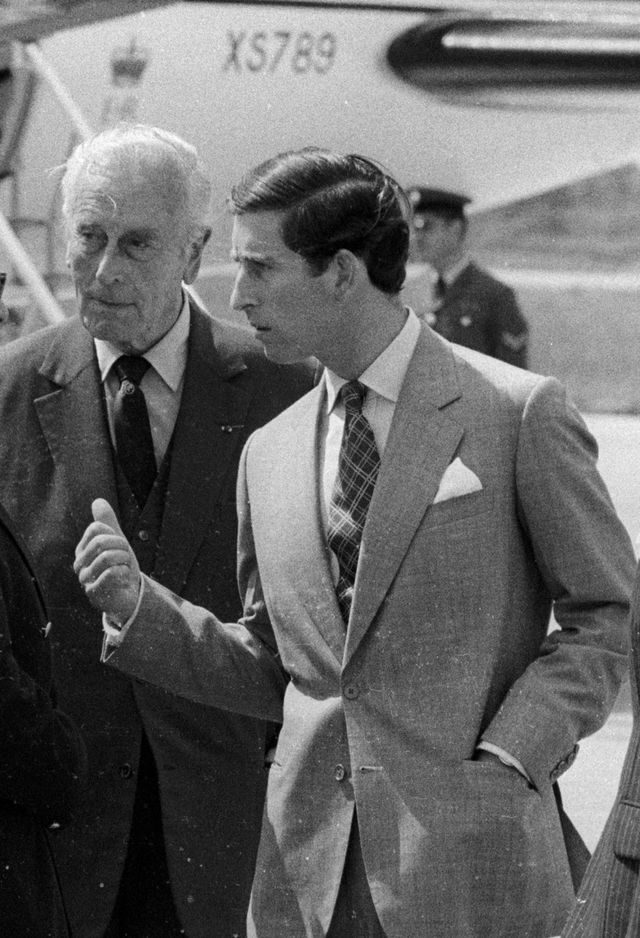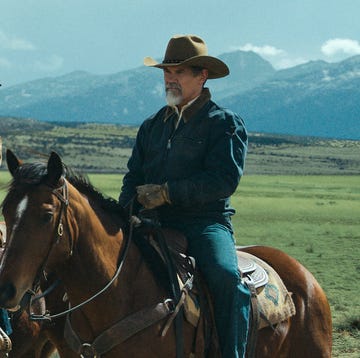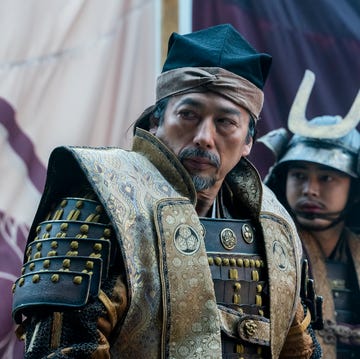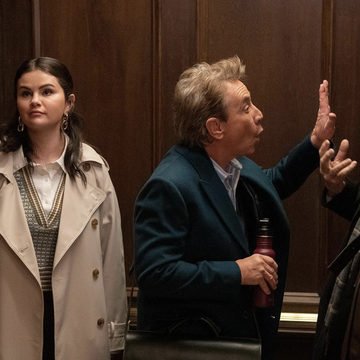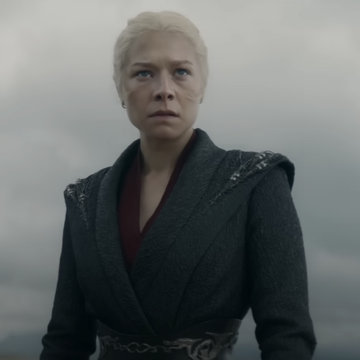The Crown isn’t a show known for violent deaths—rather, in the rarefied inner circle of the British monarchy, death by icy glare or withering remark is the most likely way to go. But in Season Four, that changes forever, with the violence and discontent running rampant in the Queen’s realm finally hitting closer to home. In the Season Four premiere, Lord Louis Mountbatten, affectionately known to the royals as “Uncle Dickie,” is assassinated at sea by members of the Irish Republican Army. The shocking loss sends the royals reeling—and touches on The Troubles, a decades-long ethno-nationalist conflict addressed only fleetingly in The Crown.
Lord Louis Mountbatten, born in 1900, was a high-ranking British naval officer who served during World War II and later became the last Viceroy of India, tasked with withdrawing the waning British Empire from an emerging independent India. As the brother of Princess Alice and the uncle of Prince Philip, it was Mountbatten who introduced the prince to his future wife, a young Elizabeth II, years before she was crowned the Queen of England. Mountbatten enjoyed a close relationship with Prince Philip, acting as a surrogate father to his nephew, but it was Prince Charles whose life he shaped the most powerfully, acting as a mentor and confidante to the future king. It was Mountbatten’s tenure in the Royal Navy that inspired Prince Charles to join the Royal Air Force, where he would perform six years of active service. Though Mountbatten was Prince Charles’ great-uncle, Prince Charles referred to him affectionately as his “honorary grandfather,” calling on him often for advice about everything from leadership to romance. Prince Charles said of Mountbatten, “I admire him almost more than anybody else I know.”
Fans of The Crown will remember the Season Three arc in which Mountbatten, aided by the Queen Mother, interfered in Prince Charles’ love life, stymieing his union with Camilla Parker Bowles. Mountbatten was notoriously opinionated about Prince Charles’ love life, writing to the prince in a letter, “I believe, in a case like yours, the man should sow his wild oats and have as many affairs as he can before settling down, but for a wife he should choose a suitable, attractive, and sweet-charactered girl before she met anyone else she might fall for.” Mountbatten encouraged Prince Charles to find a bride without “a past,” fearing that high-profile ex-lovers could cause tabloid scandal.
In the Season Four premiere of The Crown, these words echo in a scalding letter Prince Charles receives from Mountbatten, in which his “honorary grandfather” chastises him for failing to develop the virtues required of the future King of England. Imploring Charles to put aside his childish dalliances with Parker Bowles and find a sensible match, the fictional Mountbatten writes:
Must I remind you again of the importance of building your destiny with some sweet, innocent, well-tempered girl with no past, who knows the rules and will follow the rules? Someone with whom you can make a fresh start and build a new life. Someone that people will love as a princess, and, in due course, as queen. This is your duty now—your most important task. You’re more than a man, more than a prince. One day, dear boy, you shall be king. And now, to the sea.
It was during the tail end of Prince Charles’ bachelor years that Mountbatten was killed at sea in a violent act of terrorism. Every year, Mountbatten vacationed with his family at Classiebawn Castle in Mullaghmore, County Sligo, just twelve miles from the Northern Ireland border. Tensions in Ireland were approaching an all-time high, with paramilitary groups like the Irish Republican Army committing acts of violence in pursuit of Northern Irish independence from British rule. A mountainside billboard near Classiebawn Castle read, “Brits go home.” Because of Mountbatten’s royal connections and his longtime position as an elder statesman, the IRA repeatedly threatened to assassinate him, to which he responded, “Who the hell would want to kill an old man anyway?” Despite Mountbatten’s casual attitude about threats of violence, he and his family employed police protection as a bulwark against local conflict.
On August 27, 1979, Mountbatten took his family out to sea on his fishing boat, Shadow V, to catch lobsters. The night before, members of the IRA had planted a 50-pound, remote-controlled bomb on the base of Shadow V. When the bomb detonated, Mountbatten was killed, as were his 14-year-old grandson, Nicholas Knatchbull, and Knatchbull’s grandmother, the 83-year-old Dowager Lady Brabourne, who died of her wounds the following day. Paul Maxwell, the teenage boathand hired by Mountbatten, was also killed on impact. In The Day Mountbatten Died, a BBC documentary, the rescue helicopter crew member who pulled young Knatchbull out of the water said that he sees the boy’s face “over and over.”
Patricia Knatchbull, Mountbatten’s daughter, who was aboard the boat and survived the blast, spoke in the documentary about the traumatic experience.
“My own memory is of a vision of a ball exploding upwards and then of ‘coming to’ in the sea and wondering if I would be able to reach the surface before I passed out,” Knatchbull said. “I have very vague memories, now and again, of floating among the wood and debris, being pulled into a small rubber dinghy before totally losing consciousness for days.”
The IRA immediately claimed responsibility for the attack, as well as for a nearby bombing in County Down, Northern Ireland, which killed 18 British paratroopers. Thomas McMahon, a prominent IRA member, called the attack on Mountbatten “an execution.” In a statement, the IRA said of the attack, "This operation is one of the discriminate ways we can bring to the attention of the English people the continuing occupation of our country." McMahon was the only IRA member convicted of the crime, though his life sentence was commuted in 1998 under the terms of the Good Friday Agreement, which formally ended the Troubles.
Mountbatten’s death in 1979 proved a huge blow to Prince Charles. At Mountbatten’s Westminster Abbey funeral, Prince Charles delivered a reading from Psalm 107, while the Archbishop of Canterbury praised Mountbatten’s naval achievements and described him as “so rare a person.”
In a strange twist of fate, Mountbatten’s funeral may have been responsible for leading Prince Charles to the “suitable” bride Mountbatten so wanted for him. Per Tina Brown’s The Diana Chronicles, a year after Mountbatten’s funeral, Princess Diana (then Lady Diana Spencer) told Prince Charles, “You looked so sad when you walked up the aisle at Mountbatten’s funeral. It was the most tragic thing I’ve ever seen. My heart bled for you when I watched. I thought, ‘You’re so lonely—you should be with somebody to look after you.’”
In 2015, for the first time ever, Prince Charles made a painful visit to the site of Mountbatten’s assassination, along with his wife, Camilla, Duchess of Cornwall. The Prince gave a speech addressing the turbulent past between Britain and Ireland, with an optimistic eye toward the future.
"We need no longer be victims of our difficult history with each other," Prince Charles said. "Without glossing over the pain of the past, we can, I believe, integrate our history and memory in order to reap their subtle harvest of possibility. Imagination, after all, is the mother of possibility. Let us then endeavor to become the subjects of our history and not its prisoners."



